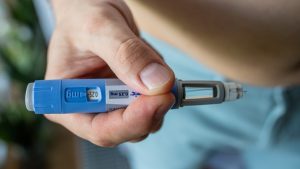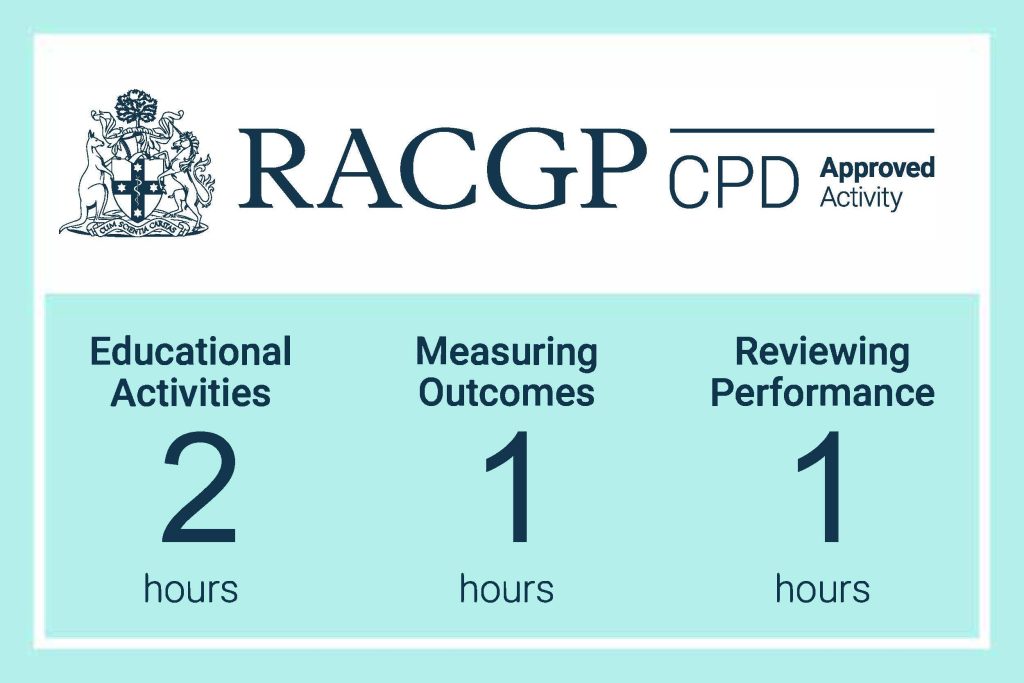Articles / MHT for women with co-morbidities – which option for whom?

0 hours
These are activities that expand general practice knowledge, skills and attitudes, related to your scope of practice.
0.5 hours
These are activities that require reflection on feedback about your work.
0 hours
These are activities that use your work data to ensure quality results.
These are activities that expand general practice knowledge, skills and attitudes, related to your scope of practice.
These are activities that require reflection on feedback about your work.
These are activities that use your work data to ensure quality results.
Oral and transdermal MHT have risks and benefits that can affect various health conditions, including migraine, gallbladder disease, cardiovascular disease, and VTE, breast and endometrial cancer risk.
Professor Rod Baber, Head of the Menopause and Menstrual Disorders Clinic at Royal North Shore Hospital and Clinical Professor of Obstetrics, Gynaecology and Neonatology at The University of Sydney, explains.*
Menstrual migraine is the most common migraine presentation in women. Episodes typically peak during perimenopause when hormone levels are most labile.
Women who experience migraines have been found to be at increased risk of cardiovascular disease, as are women with severe and/or early onset of vasomotor symptoms, Professor Baber says. This risk is even greater in women with both.
“MHT initiated close to the final menstrual period may help to reduce cardiovascular risks as well as alleviate symptoms of migraine, so there’s a strong argument for treating these women,” he says.
“Menopausal hormone therapy is not contraindicated in migraine sufferers, even those who experience a migraine with aura. But in general, we would recommend that you use transdermal MHT in these women.”
This is both because serum hormone levels are more stable with transdermal estradiol use, and because normal doses of transdermal MHT don’t increase the risk of thromboembolic events.
“Although you may notice a migraine when you first start treatment, after about 72 hours, the estradiol levels will become fairly stable as long as treatment is continued in the recommended manner.” – Professor Baber
Gallbladder disease risk is increased with all forms of menopausal hormone therapy, Professor Baber notes, and is greater for higher doses and for conjugated estrogens than body identical estradiol.
“But if we look at the risk of gallbladder disease in its extreme outcome, which is cholecystectomy, the risk is slightly greater for oral therapy than it is for transdermals,” he says.
For this reason, transdermal MHT is preferable for those at increased risk of gall bladder disease.
Regardless of the route of administration, MHT has been shown to reduce LDL, Professor Baber notes, citing a recent systematic review that included 12 studies comparing the effects of oral and transdermal MHT on lipid metabolism.
However, some studies in the review reported only a non-significant reduction in LDL with transdermals, he adds, “and that might just be a signal that the benefit is greater in terms of LDL reduction for oral than it is for transdermals.”
Other key findings:
“There might be a slight added benefit for oral MHT in terms of lipid metabolism and carbohydrate metabolism compared to transdermal, but this needs to be balanced against any increase in thromboembolic risk seen with some forms of oral MHT.”
Progestogen choice is also very important, he stresses, noting “the use of MPA or levonorgestrel definitely resulted in a negative impact on glucose tolerance and insulin resistance for women using MHT.”
When it comes to acute myocardial infarction, six studies compared oral vs transdermal MHT, with no studies finding either increased risk or any advantage for one delivery mode or the other.
“Either form of MHT was equally beneficial in terms of the risk of acute myocardial infarction compared to placebo or control groups.”
“And the conclusion therefore is that for women who have mild cardiovascular disease, you can use whatever you want. If they have moderate to severe cardiovascular disease, then you should use transdermal therapy.”
The systematic review identified four randomised controlled trials comparing the effect of oral and transdermal MHT on endometrial cancer risk, finding no difference in risk with either form of therapy. The rate of amenorrhoea was similar in both groups.
However, one observational study published in 2010 did report a difference in endometrial cancer risk for various MHT regimens, Professor Baber notes.
The risk was highest when estrogen and progestogen were prescribed as two separate entities. Risk was also elevated for those taking sequential therapy however for those on continuous combined therapy there was no increased risk.
“When the estrogen and progestogen were used in a fixed dose combination, the risk was not increased. And the reason is that the dose of estrogen was perfectly matched to the dose of progestogen. And it was frankly impossible for the women to not comply with the dosage regimen.”
For women with a uterus who are taking estrogen, regardless of whether it’s oral or transdermal, it’s critical to explain the importance of taking the progestogen in the recommended dose and duration – and reporting any unexpected bleeding.
Seven studies in the review compared the effect of oral and transdermal MHT on breast cancer risk.
“The news is generally very good,” Professor Baber says. “No difference in the risk of breast cancer for women who used oral or transdermal therapy.”
“Whilst estrogen-only MHT does not appear to increase breast cancer risk, the risk is increased with combined estrogen and progestogen MHT. This risk can be minimised by the use of body identical progesterone or dydrogesterone [a neutral progestogen] rather than a synthetic progestin.”
Lifestyle factors also play a significant role in breast cancer risk, he says, stressing that rising breast cancer rates are not related to menopausal hormone use.
“Fewer women today are taking hormones than ever. But breast cancer risk is going up.”
“It’s got a lot to do with what we eat and what our lifestyle is. And it’s important that our patients understand that.”
For example, there are almost a third fewer breast cancer cases in women who exercise for 2.5 hours per week, almost a quarter more in women who drink two or more units of alcohol per day, and twice as many in women with obesity, according to data from the British Menopause Society.
Background risk for thromboembolic disease is very low, with an incidence of about one per 1,000 in women aged 45 to 60 per year, Professor Baber says. So it’s important to keep that in perspective while considering the impact of oral estrogens on venous thromboembolism risk.
Two of the 10 studies in the review that compared thromboembolism risk of oral versus transdermal MHT found no difference, while eight found an increased risk for oral MHT, Professor Baber says.
“The risk for synthetic estrogen was greater than it was for conjugated estrogens, which was once again greater than it was for estradiol alone. And the effect was dose related.”
Progestogen choice also matters.
“The risk has been shown to be lower when body identical or neutral progestogens are used compared to synthetic progestins.”
Oral conjugated estrogen and oral medroxyprogesterone acetate was “the most thrombogenic combination of the lot, with an odds ratio (OR) of 2.1,” Professor Baber says.
“In contrast to that, women who used oral estradiol plus dydrogesterone had trend towards an increased risk which was not statistically significant”.
“Thromboembolic risk is not increased but low to medium doses of transdermal estradiol with or without a progestogen.”
Based on this educational activity, complete these learning modules to gain additional CPD.

Menopausal Hormone Therapy - What Dose of Estrogen is Best?

Cardiovascular Benefits of GLP1s – New Evidence

Oral Contraceptive Pill in Teens

RSV and the Heart


Modified but kept in place
Eliminated entirely without replacement
Maintained as is
Completely replaced with an alternative system
Listen to expert interviews.
Click to open in a new tab
Browse the latest articles from Healthed.
Once you confirm you’ve read this article you can complete a Patient Case Review to earn 0.5 hours CPD in the Reviewing Performance (RP) category.
Select ‘Confirm & learn‘ when you have read this article in its entirety and you will be taken to begin your Patient Case Review.
Menopause and MHT
Multiple sclerosis vs antibody disease
Using SGLT2 to reduce cardiovascular death in T2D
Peripheral arterial disease
